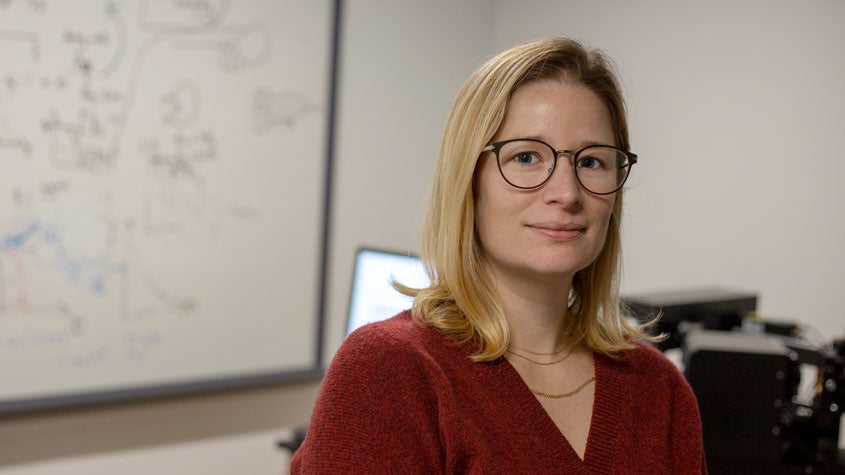The influence was indirect but Amanda Marciel, assistant professor of chemical and biomolecular engineering at Rice University, credits her parents with turning her into a polymer scientist.
“I was mainly an outdoor kid,” she said. “I think my interest in science comes from just exploring outside. But my mother went back to school to become a nurse when I was still young. That impressed me.”
Marciel, who will turn 34 on Christmas Day, formally joined the Rice faculty last Jan. 1, and is still busy setting up her lab in the Space Science and Technology Building. Asked to pinpoint her diverse research interests, she said: “I just want to develop polymers with unique properties to meet current and future societal challenges.”
Born in New Hampshire, she grew up in Santa Cruz, California, where her father worked in the rose industry and her mother worked as a labor and delivery nurse.
Marciel earned her B.S. in chemical biology from the University of California at Berkeley in 2008. For a year afterward she worked as a research associate in the Molecular Foundry at the Lawrence Berkeley National Laboratory, one of five Nanoscale Science Research Centers sponsored by the U.S. Department of Energy. While there she co-authored and published her first peer-reviewed journal article, in Nature Materials.
For graduate school Marciel went to the University of Illinois at Urbana-Champaign, where she researched branch polymer elasticity and fluidic-directed polymer assembly in the Center for Biophysics and Quantitative Biology, followed by four years as a postdoc in the Institute for Molecular Engineering at the University of Chicago.
“I figured out pretty early that I liked research,” she said. “I like to get deep into what interests me. In this case, soft materials.”
That includes polymers, which are substances, natural or synthesized, made of long, repetitive chains of monomers. Plastics are polymers.
Marciel’s work amounts to fundamental polymer physics but she acknowledges the multiple applications it may eventually have. For instance, polymeric materials are good candidates for manipulating interfacial properties, with future applications in energy storage and conversion, sensing, separation and thermal insulation.
“Imagine the possibilities. We’re a long way from this, but think of producing all of our polymers using yeast or E. coli,” she said.
Marciel’s lab is still in development but she has already recruited five doctoral students and hopes to enlist undergraduates.
“Our work is highly interdisciplinary. I can work with chemists and materials scientists and other researchers. Rice has a very nice research environment. I felt very welcome right from the start,” she said.
Body
Imagining the possibilities of polymers
ChBE professor Amanda Marciel aims to use her research interests to meet societal challenges.

